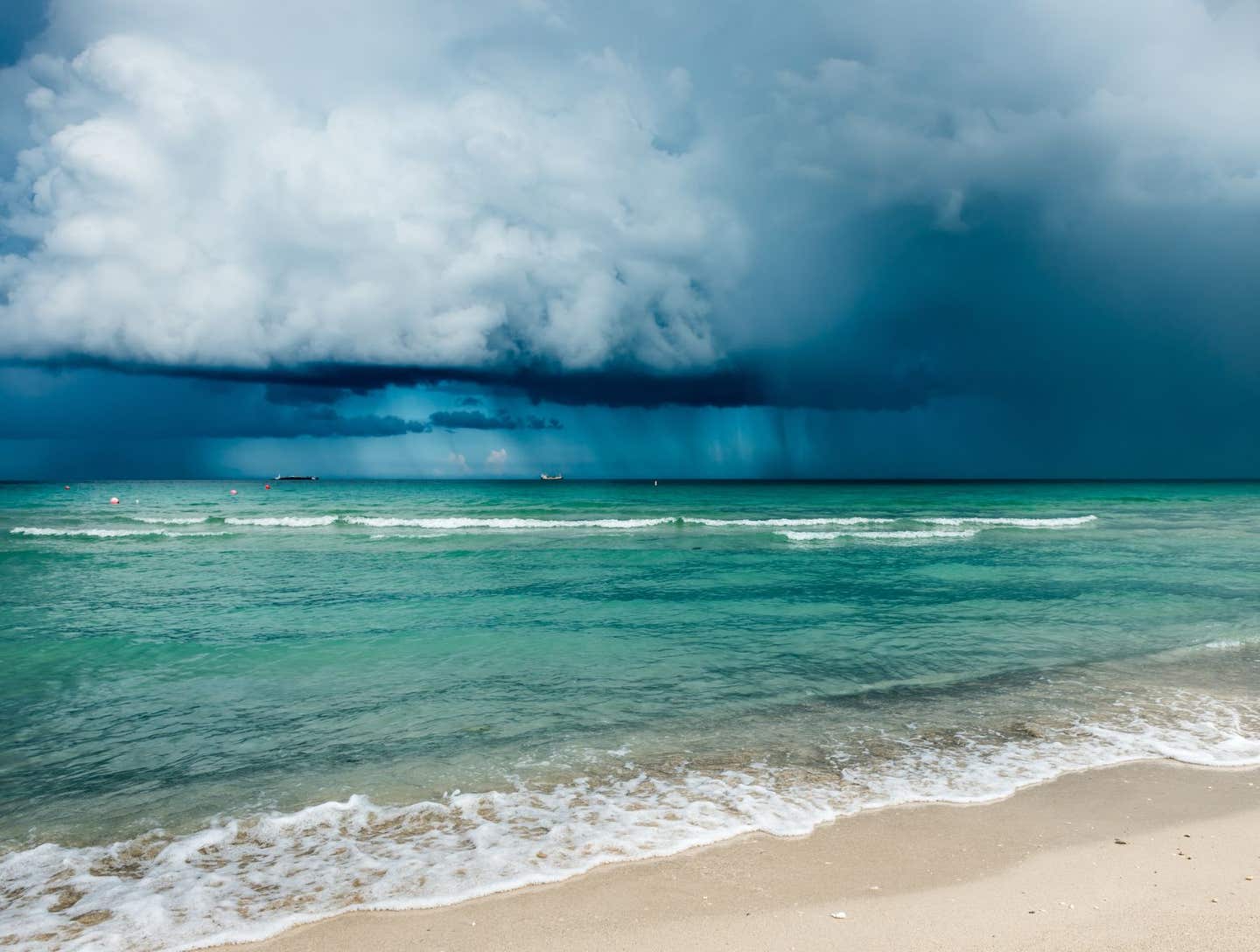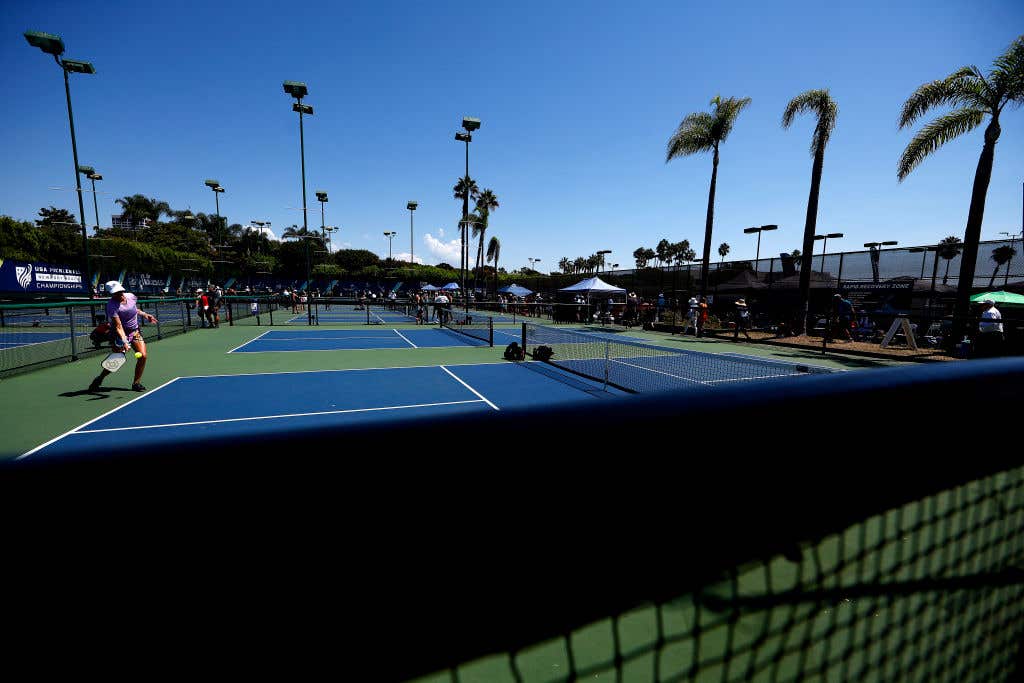
Getty Images / Maryna Patzen
Getty Images / Maryna PatzenIf you're heading to the polls in Florida, you'll want to know the weather forecast. Some areas of the state are in for stormy weather, while others are just looking at some light showers. Election Day is moments away, and as always, storms and any inclement weather could make it more difficult to get to the polls. If you have friends and family voting around the country, you might be curious to learn about what the country will face on Election Day when it comes to weather, too.
Florida Election Day Weather
So, how much does weather impact voting the day of an election? Obviously, if the weather is terrible, that makes it more difficult to vote. But, if you're really motivated, you'll do whatever it takes to get to the polls. Conventional wisdom does say that if the weather is terrible, of course, it will impact voter turnout in a negative way. But, regardless, that doesn't seem to be the case this year, because there's nothing too crazy in the weather forecast.
"Most studies show the impact is relatively small, but even small numbers can make a big difference in close elections like this year’s presidential matchup and others in recent years," the experts at the Weather Channel state.
Weather forecasters are predicting that most of the country will enjoy mild weather on Tuesday, November 5. However, some spots will likely get rain, and for those super north, snow. So, it's a mixed bag, and some of the swing states in the Midwest could be looking at a bit dicer weather than in other parts of the country. The key here is that some spots will see a "bit dicer" weather, because it's really not going to be anything too terrible. That's good for those who want to hit the polls on voting day.
"Election Day weather on Tuesday will include rain for some - including key swing states - and that has impacted turnout on the final day of voting in past years," the Weather Channel states. "The key swing states of Michigan and Wisconsin could see rain, at times, along with gusty winds associated with the cold front."
In Florida, it's a mixed bag of weather. In Tampa, expect rain in the afternoon, according to the Weather Channel, with most areas seeing a 40% to 50% chance. "Partly cloudy in the morning. Increasing clouds with periods of showers later in the day. Very warm," the Weather Channel notes. Highs in the upper-80s. For Fort Myers, the story is different. Expect "rain showers in the morning with numerous thunderstorms developing in the afternoon," the Weather Channel states. The temperature is also expected to be in the upper-80s.
Nobody likes dealing with severe weather. But, it's part of life. Depending on where you live in the United States, you might come up against hurricanes, tornados, severe thunderstorms, blizzards and more. I've certainly had my fair share of severe weather events. Probably my most vivid memory was being in an ice storm, which knocked power out for about a week where I lived, including during Christmas. It was freezing cold, so my family and I had to go to a hotel that was out of town. Needless to say, our Christmas plans were totally different that year. So, what are some severe weather safety tips that may safe your life?
Before we get to the main tips, let's get through some basics. Stay informed when a severe weather event is approaching. It's simple but important. You don't want to be caught off guard when bad weather strikes. The National Oceanic and Atmospheric Administration and National Weather Service both have information that they provide leading up to and during a severe weather event. So, make sure to get the latest information in the case of any weather emergency. Local meteorologists also have good information, but the main alerts come from the National Weather Service.
Another mistake some people make is not taking "watches" seriously. For example, you might see that there's a severe thunderstorm watch in your area and think, oh, it's just a watch, I can go out for a walk. Don't do it. "A watch is used when the risk of a hazardous weather or hydrologic event has increased significantly, but its occurrence, location or timing is still uncertain," the National Weather Service explains. We'll get more into the specifics of a watch, warning and advisory later in this story.
Let's get into some severe weather safety tips that may safe your life.
1. Know the Difference Between an Advisory, Watch and Warning
A weather advisory, watch and warning all need to be taken seriously. So, what do they mean? According to the National Weather Service, "a warning is issued when a hazardous weather or hydrologic event is occurring, imminent or likely." A watch is where "the risk of a hazardous weather or hydrologic event has increased significantly, but its occurrence, location or timing is still uncertain." Finally, an advisory means, "hazardous weather or hydrologic event is occurring, imminent or likely."
2. Stay Inside at All Costs
During a severe thunderstorm, and any severe weather event, the best thing to do is stay inside and sheltered. "The best defense against thunderstorms is to stay inside a sturdy building or shelter that can protect you from deadly lightning, large hail, damaging winds, flooding rain and tornadoes," the National Weather Service says. Also, you don't want to risk getting hit by lightning, like in the image below.
3. Get Low and Protected
During a tornado, get underground if possible. If you don't have a basement, get to the lowest floor possible. Also, during a tornado, watch for flying and falling debris. The National Weather Service advises to "use pillows, blankets, coats, helmets, etc. to cover up and protect your head and body from flying debris."
4. Always Have an Emergency Kit
Be prepared. Have a good emergency kit, both in your house and your car. For the car, "An emergency kit should include booster cables, shovel, tow rope, sand or cat litter, and a flashlight with extra batteries," the National Weather Service says. "Do not forget a first aid kit, non-perishable food, and blankets or sleeping bags."
5. Stay Gassed Up
This one my mom and dad always tell me to do. And, they're right. "Keep your gas tank near full to avoid ice in the tank and fuel line," the National Weather Service advises.
6. Be Prepared for Heat, Too
Heat can make for a severe weather event, too. So, dress appropriately when it gets really hot. "Lightweight, light-colored clothing reflects heat and sunlight, and helps your body maintain normal temperatures," the National Weather Service says. They add to guzzle lots of "water or non-alcoholic fluids."
7. Don't Stick Around
Sometimes, you just have to leave ahead of the storm to be safe. In the case of a hurricane, the National Weather Service says to "leave immediately if ordered." They also say that if you are allowed to stay, to "take refuge in a small interior room, closet or hallway on the lowest level during the storm. Put as many walls between you and the outside as you can," and "stay away from windows, skylights and glass doors."
More tips
Weather isn't just about thunderstorms and tornados. Air quality is a big part of weather events these days, too. Be on the lookout for air quality alerts in your area. If you have respiratory issues, you should wear a mask when out and about in bad air quality. You should also say inside if the air quality is especially bad.
Be safe on the beach
Even on a perfect weather day, if you're at the beach, there are risks. The NOAA states, "To stay safe, you need to stay aware of the weather, the ocean, tide, and what is going on around you." They add, "Storms, such as thunderstorms, tropical storms, and hurricanes far out at sea can create dangerous waves and currents at the beach, even on a sunny day!"





